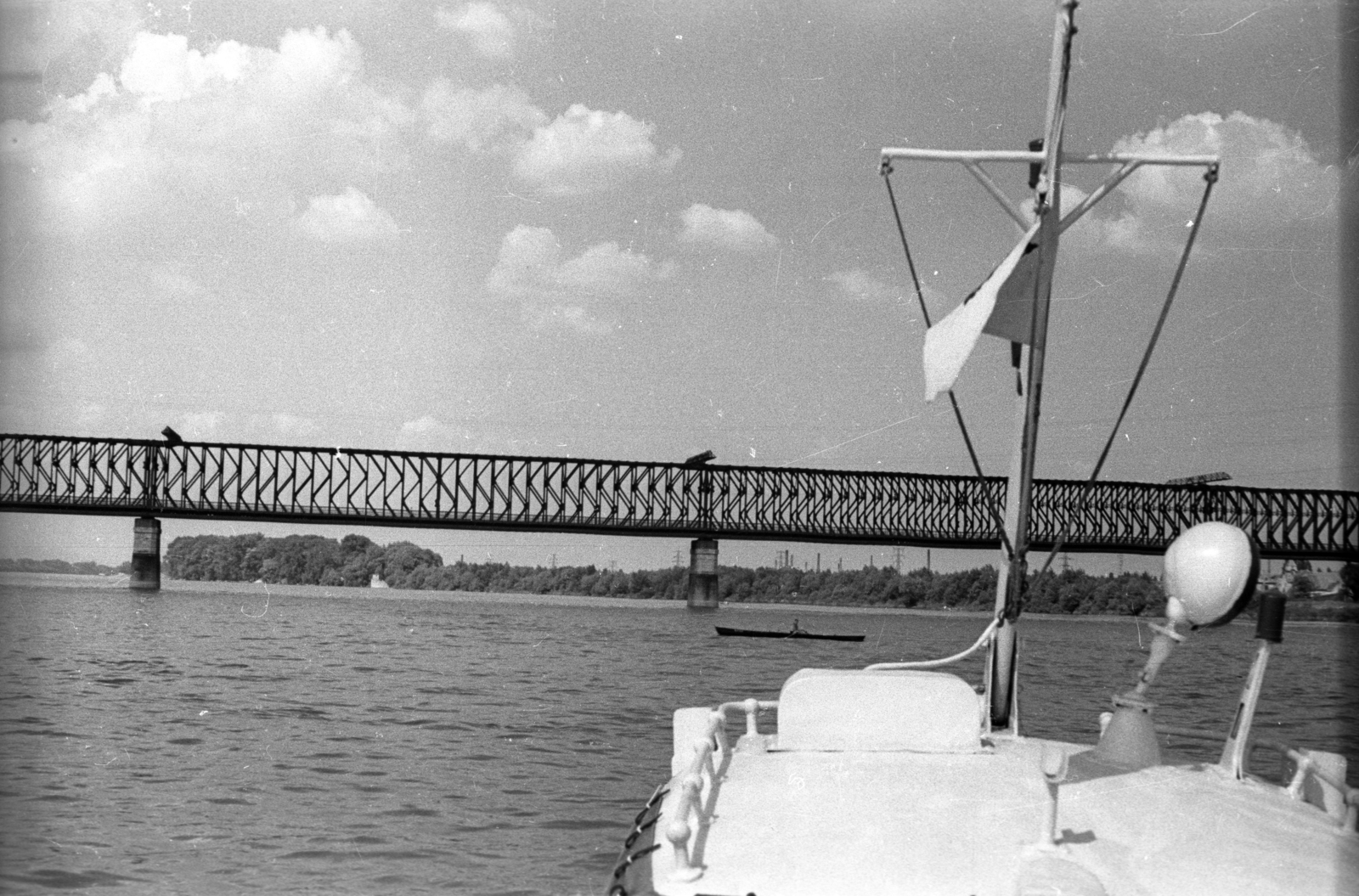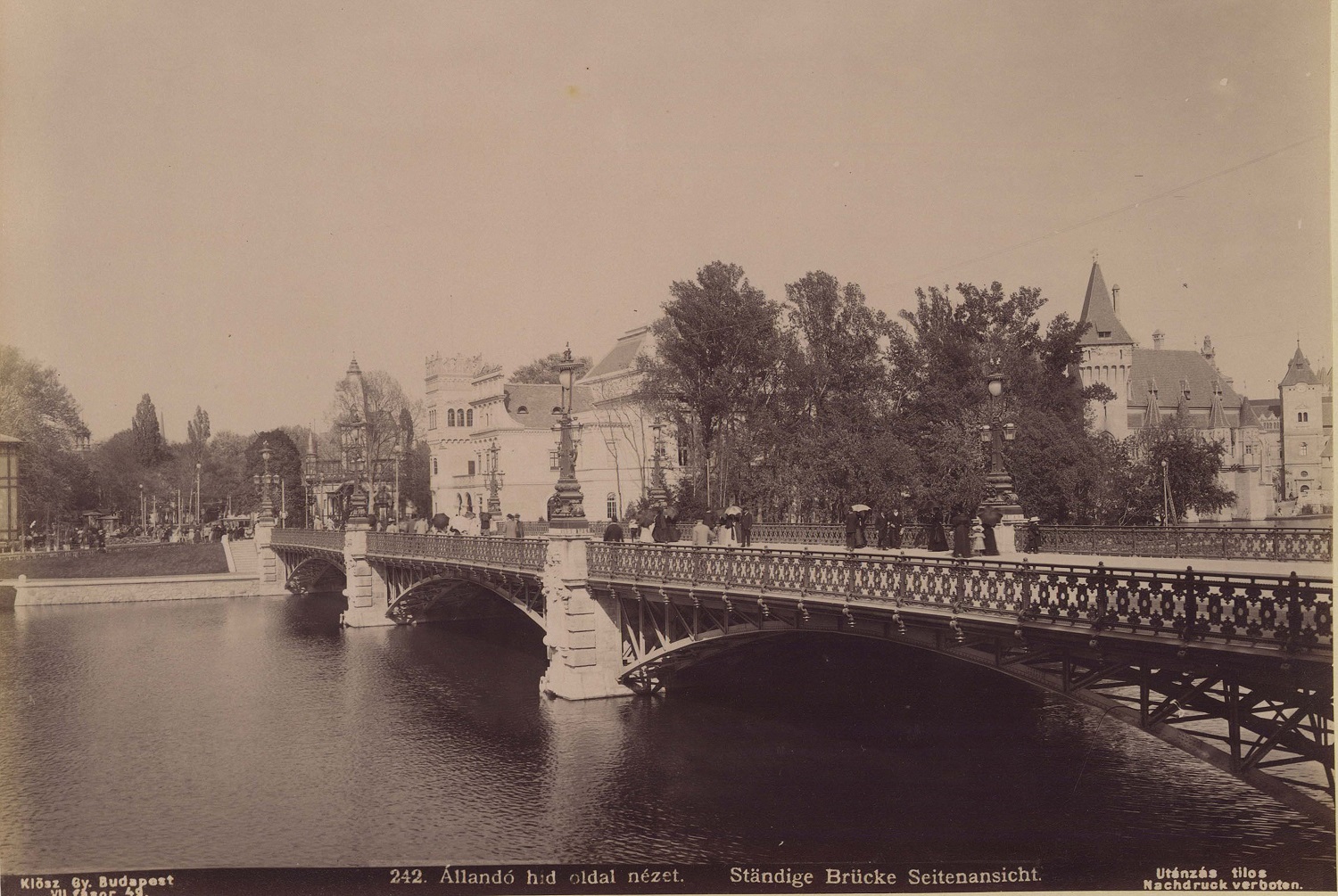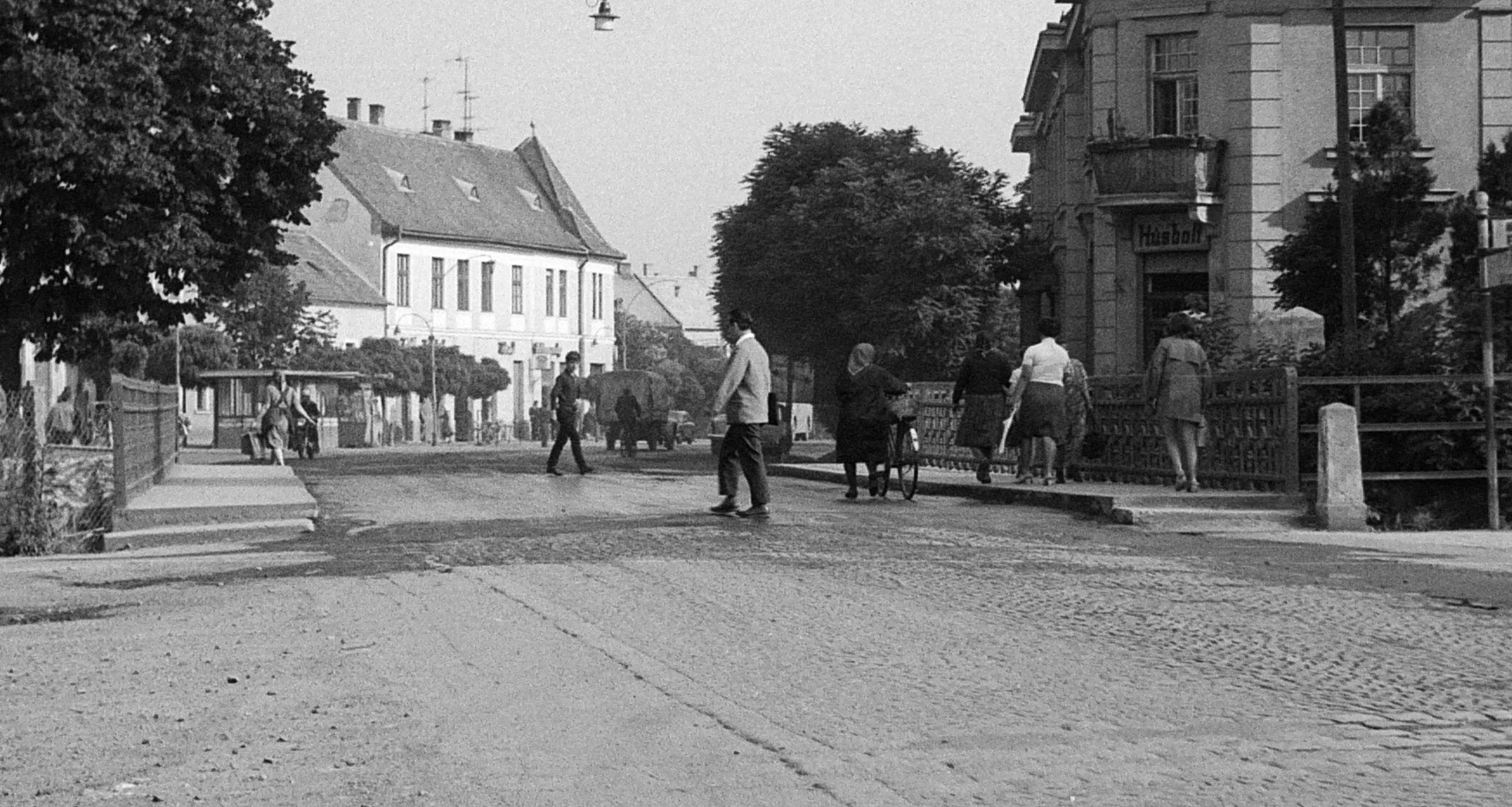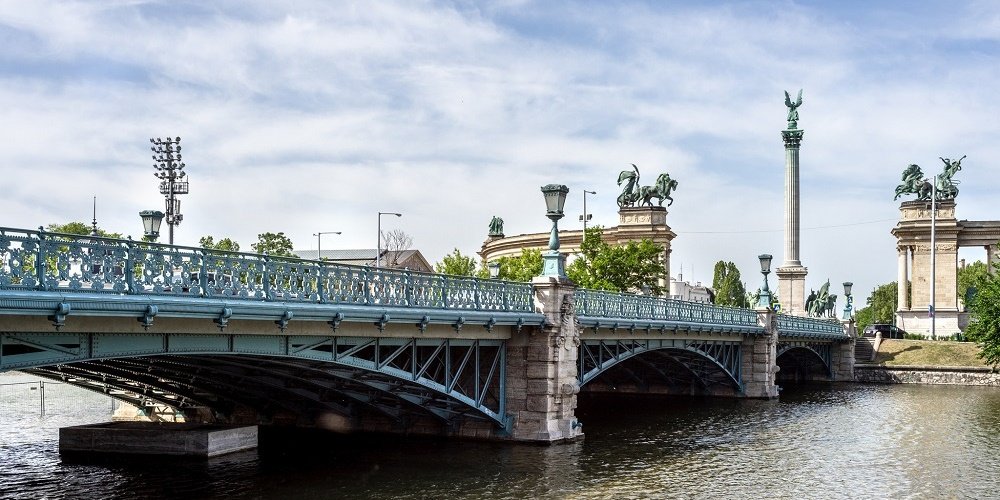Many elements of the bridges in Budapest have reused pieces of other ones, and once an idea of relocating an entire bridge was floated. Gangways and pontoon bridges can be relocated easily, as has been the case in the past, both in the 19th century and after World War II, but the relocation of entire permanent or semi-permanent bridges is not so rare.
When World War II destroyed today's Southern Railway Bridge, a new structure was needed quickly. Fortunately, raw material for war bridges was in stock. The temporary railway K-bridge, which got its name from the shape of the structure that formed the bridge, was built from these supplies. Its creator was a Hungarian military engineer, Dr László Feimer.

The bridge, built of characteristic “K”-shaped elements, was originally the Southern Railway Bridge, then it served in Újpest for 53 years. The bridge in Újpest in 1959, photographed from the deck of a ship (Photo: Fortepan/No.: 117109)
The bridge was designed to be assembled and disassembled quickly from the offset, as it was intended for temporary use. So when the new structure was completed, the old K-bridge was dismantled, and two others were built from its parts. One in Újpest, where the structure intended to be temporary, was completed in 1955 and eventually remained in place for 53 years. (Today’s K-bridge to Hajógyári Island has the same structure, but it does not use elements of the old railway bridge.)
Bridge elements from Budapest have also been used elsewhere. Walking in City Park, on the Zielinski (formerly Millennium) Bridge, the candelabras of the bridge may seem familiar to keener eyes. The lamps are not the original elements installed in 1896, as these were lost during World War II. However, after the war, all the candelabra had to be remanufactured for Chain Bridge. Those in good condition were simply retrofitted to the Zielinski Bridge (as can be seen on the cover photo).

The Zielinski Bridge in City Park with its original candelabras in 1896, photographed by György Klösz (Photo: Fortepan/No.: 82707; Budapest Archives, Reference No.: HU.BFL.XV.19.d.1.09.033)
There is also a lot of material from the structure of the Chain Bridge, which was blown up during the war, in other bridges in the countryside, such as in Berettyóújfalu. The components of Margit Bridge were used in a bridge on Main Road 42 when it was rebuilt in 1948–1949.
The old chain elements of Chain Bridge were also used at Baja during the reconstruction of the Simon-Danube floodplain road bridge. Here, at the bridge on Main Road 55, a tied-arch bridge was built (where the lower points of the arches are connected), and this tie was made from the chain elements of the Chain Bridge. This bridge no longer exists as it was demolished in 1986.
Not much remained of the old Erzsébet Chain Bridge after German troops blew it up at the end of World War II. Although, its quality material has been melted into the parts of other bridges. However, part of it remained the same, and its ornate railings were used in the post-World War II reconstruction of the Kis-Rába bridge in Kapuvár.

The railing elements of the bridge in Kapuvár came from the Erzsébet Bridge (Photo: Fortepan/No.: 74085)
Near Budapest, the arches of the Árpád Bridge in Ráckeve were made using the arches of the Tisza Bridge from Szeged.
However, plans have also been made in Budapest to relocate entire bridges. A pedestrian bridge was designed for the 1996 EXPO, with which pedestrians would have crossed from today's Infopark area to the planned venue of the World's Fair. This pedestrian bridge was designed by UVATERV but not as a permanent bridge in Budapest. The idea was to simply move the bridge to another place after the expo closed (for a long, time Mohács was the planed final home for the bridge). However, there it would have served as a road bridge.
There were ideas to relocate a larger bridge too. Before renovating the first structure of the Deák Ferenc Bridge, which was completed in 1990, the engineers thought a lot about how to demolish the whole bridge and build a new one to lower the costs of repairing the structure. But they did not want to simply tear down the old bridge. They looked at several locations where a bridge structure of hundreds of metres could be used.

The planned bridge for the EXPO, which would have been moved to Mohács (Photo: Népszabadság, Budapest appendix, 14 January 1994)
One idea was to take it upstream and rebuild it at Galvani Road. There were also plans to take it further north and build the Aquincum Bridge from the structure. However, these ideas came to nothing, and the bridge was renovated in its original location.
Now they are looking for a new function for the usable elements of the soon-to-be-demolished Southern Railway Bridge. The residents may not have to say goodbye to this bridge either, as they will see its parts elsewhere renovated.
Cover photo: Candelabra of the Chain Bridge on the Zielinski Bridge (Photo: Balázs Both/PestBuda.hu)




































Hozzászólások
Log in or register to comment!
Login Registration